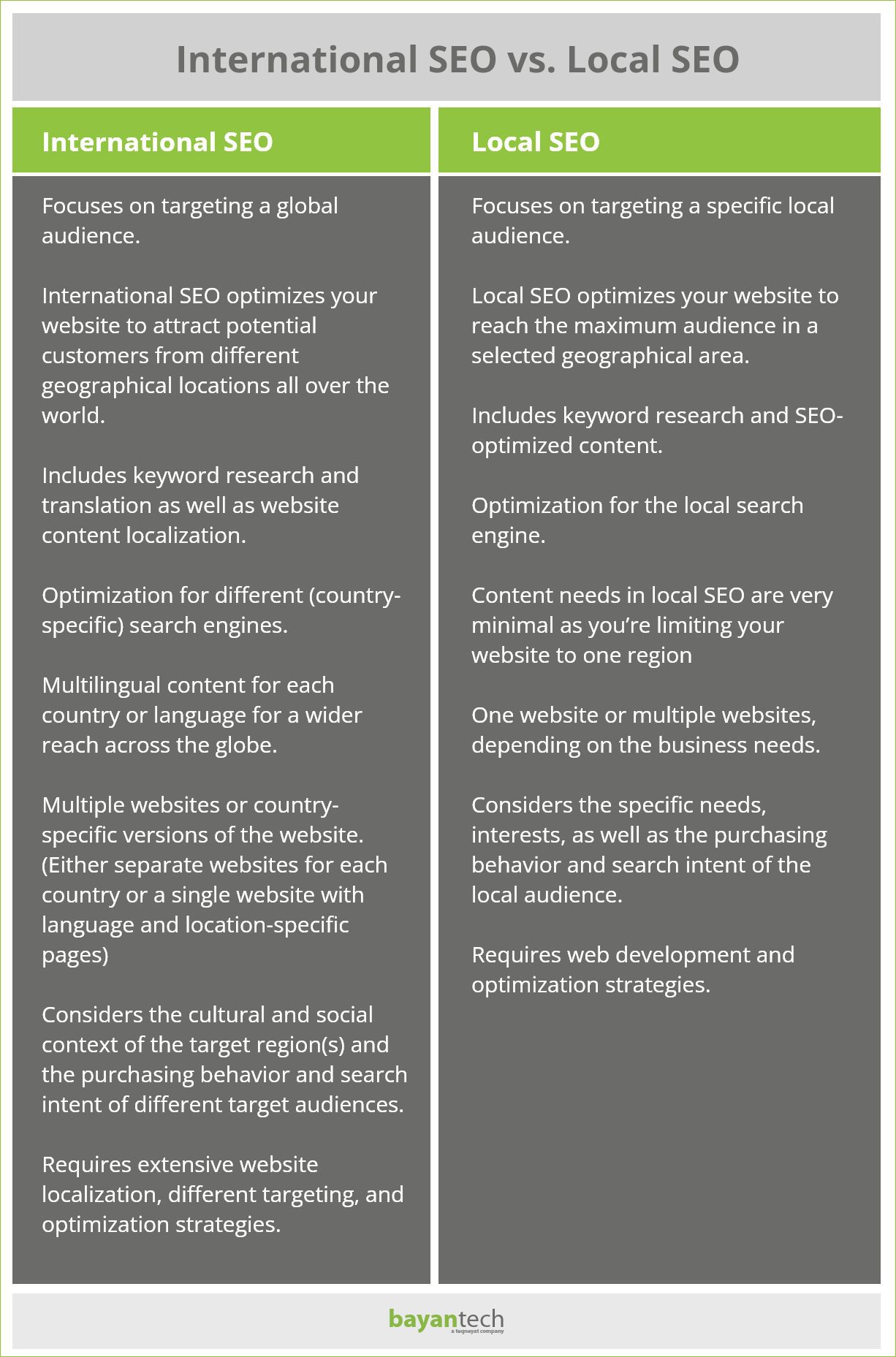Crafting a Global Impact: International SEO Techniques for Lasting Growth
Crafting a Global Impact: International SEO Techniques for Lasting Growth
Blog Article
Navigating the Digital Landscape: Leveraging International Search Engine Optimization for Cross-Border Success
In today's interconnected electronic world, organizations are increasingly looking beyond borders to take advantage of global markets. Leveraging search engine optimization (SEO) strategies customized for international audiences is essential for attaining cross-border success. The complexity of browsing the digital landscape on a global scale requires a nuanced strategy, from comprehending the principles of International SEO to executing geotargeting and multilingual keyword approaches. As business aim to broaden their reach and presence across various regions, maximizing internet site frameworks and monitoring cross-border performance become important components of a successful global search engine optimization strategy.
Recognizing International SEO Fundamentals
Browsing the ins and outs of global search engine optimization needs a solid grasp of fundamental principles to effectively increase on-line presence throughout borders. One crucial element of global SEO is recognizing the value of localization. This entails customizing site content to match the linguistic, social, and industrial distinctions of target markets. Key phrases have to be not only converted yet additionally adapted to reflect how users in various regions look for info.
Additionally, having a clear understanding of geo-targeting is necessary. This involves suggesting to online search engine the certain nations or regions a web site is targeting. Carrying out hreflang tags is one means to communicate this info, making sure that the correct version of a web page appears in the search engine result for an individual in a specific area.
Additionally, understanding the influence of neighborhood online search engine and social media systems is crucial for international SEO success. While Google is dominant in lots of areas, nations like China have their very own search engines like Baidu, requiring tailored methods for each platform to optimize on the internet presence (International SEO).

Targeting Multilingual Search Phrase Approaches
Creating multilingual search phrase methods is crucial for successfully getting to diverse global target markets and making best use of on the internet presence across different etymological regions. When targeting multilingual key phrase strategies, it is critical to carry out thorough research study to comprehend the details search terms and phrases utilized by the target market in each linguistic region. This includes not just translating key phrases yet likewise taking into consideration cultural nuances, local languages, and search patterns special to each target audience.
To produce an effective multilingual keyword phrase approach, it is essential to focus on importance and search intent. Key words need to align with the content on the website and reverberate with the social context of the target audience. Utilizing tools such as Google Search Phrase Organizer, SEMrush, or Ahrefs can aid identify high-performing key words in various languages and assess their search volume and competition level.
In addition, surveillance and analyzing the performance of multilingual key words on a regular basis is crucial for maximizing and improving the approach over time. By continuously adjusting to modifications in search behavior and patterns, companies can improve their online exposure and draw in more international website traffic to their websites.
Carrying Out Geotargeting and Hreflang Tags
When intending to boost international search engine optimization methods, integrating geotargeting and hreflang tags is essential for optimizing website visibility throughout various areas. Geotargeting involves tailoring web content to certain locations, guaranteeing that individuals in different locations receive appropriate info. By executing geotargeting, businesses can boost their regional search rankings and bring in region-specific Check This Out web traffic.

Optimizing Website Framework for Worldwide Visibility
To better improve global SEO strategies past geotargeting and hreflang tags, enhancing the site framework is critical for accomplishing global exposure and optimizing reach across various regions. A well-structured internet site not only improves customer experience however additionally helps with search engine spiders in recognizing the material and context of the website.
Furthermore, producing language-specific subdirectories or subdomains can aid look engines deliver the ideal version of the web site to users based upon their language preferences, further enhancing the general user experience. Additionally, maximizing link structures to consist of relevant key words and geotargeted terms can boost the website's presence in different regions. By structuring the web site properly for international audiences, companies can enhance their possibilities of drawing in international website traffic and expanding their reach across borders.

Surveillance and Assessing Cross-Border Efficiency
Reliable monitoring and studying of cross-border performance is crucial for reviewing the success of global SEO approaches and identifying possibilities for enhancement in worldwide reach and presence. By closely tracking crucial performance indicators (KPIs) throughout various markets, companies can obtain important insights into the performance of their cross-border search engine optimization initiatives. Monitoring metrics such as natural web traffic, keyword positions, conversion rates, and bounce rates can offer a detailed view of exactly how well a web site is performing in various areas.
Evaluating cross-border efficiency information allows companies to identify fads, patterns, and areas for optimization. By comparing performance across various countries, regions, or languages, business can identify effective techniques and center web content to better deal with specific target market. In addition, keeping an eye on cross-border efficiency makes it possible for companies to remain agile and responsive in the ever-evolving digital landscape. Regular analysis of search engine optimization performance on a worldwide scale guarantees that companies can adjust their strategies quickly to maximize emerging chances and preserve a competitive edge in worldwide markets.
Conclusion
Finally, worldwide SEO plays an important go now duty in attaining cross-border success by maximizing internet sites for worldwide visibility, targeting multilingual key words techniques, executing geotargeting and hreflang tags, and keeping track of cross-border efficiency. By comprehending the fundamentals of click to read worldwide search engine optimization and enhancing internet site structures as necessary, businesses can successfully reach and involve with their target audiences across different regions and languages. This critical approach is crucial for increasing market reach and driving online growth in today's digital landscape.
Report this page